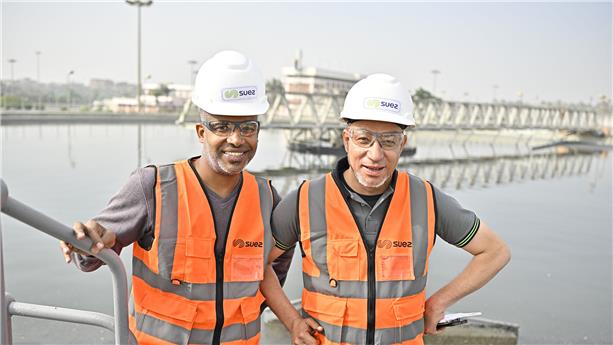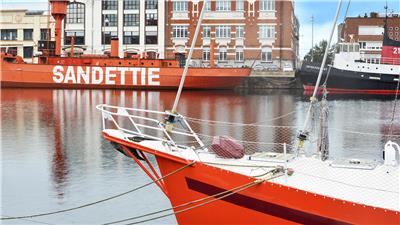How do you think urban planning and air quality are connected? How can we improve the way this issue is taken into account in urban planning? With what tools and good practices?
Bernard Weisbecker: A few years ago, we wondered what urban planning had to do with health. We have experienced several changes worldwide, such as the risk of flooding or risks caused by air quality, which require us to take health issues into account in urban planning. In our region and elsewhere in France, we devise risk management plans for flooding, noise pollution, etc. They provide geographic maps showing “pale” and “bright” areas.
Pale areas are reserved for new districts and buildings. New urban projects have to take into account a certain number of criteria such as how buildings are oriented in terms of direct sunlight which, when used efficiently, can reduce the amount of heating a building needs and even render it positive energy. We are also building more and more buildings with flat, green roofs to absorb CO2. All this cuts heating bills and reduces air pollution.
ATMO Hauts-de-France (regional air observatory) and Dunkirk urban community drew up a 3D strategic air map to show how air quality can change in a given district or street, depending on different inputs: sunshine, wind, trees, a lawn, etc.
Urban renovation must also follow new principles including energy savings, renewable energy, green roofs, etc. Urban renewal is very expensive and we must not get it wrong. We have to pay particular attention to how buildings are oriented and make sure we leave space for nature in the city, not just for health reasons but also to offer more leisure activities. Green spaces also help regulate temperature during a heatwave.
Why is air quality an important subject for the Dunkirk region?
Bernard Weisbecker: Dunkirk is defined by its port and its industrial zone to the west of the city. This is an industrial region, the largest energy platform in Europe with a nuclear power plant, LNG terminal, aluminium and petrochemical production plants, etc. It is also the largest producer of CO2 in Europe.
At the Urban Planning Agency, we are focusing on health. According to the World Health Organisation, the body counts for about 15% of a person’s health while their environment counts for the remaining 85%. The city and the urban community bid in the French government’s Territoires d’innovation (Innovative regions) request for proposal and came third. This project [Dunkirk: creative energy] includes a section on improving air quality. Investments will be made to reduce the quantity of CO2 produced by local industry.
The Urban Planning Agency is also creating “Webs”, a system of maps showing all interactions and the influence that each player has on a region. It shows, for example, that about 40% of the Dunkirk region’s decision-makers are based abroad and intervene through trusts. We are not master of our decisions. We are working on a special Web on health.
How do local inhabitants perceive air quality?
Bernard Weisbecker: ATMO’s air quality forecast is broadcast on television every evening. People follow it because they trust the data. The region is often orange or red, which can be worrying.
When it comes to air quality, it is not only the introduction of new procedures that matters but also the confidence people have in the air quality data they are given. Transparency is very important. Which is why we are currently looking for new ways of communicating with people on a more precise level. I recently began leading a working group on the subject, called “Innovative Regional Dialogue”.
In 2018, bus travel was made free for everyone. What impact this has had on air quality?
Bernard Weisbecker: Free bus travel has significantly reduced the number of car journeys [Editor’s note: 50% new passengers in one year, 48% of whom have given up using their car,] but it is a bit too early to tell the real impact on air quality. A 2015 study on mobility showed that on average there was one person per car on journeys of 2 to 2.5km and that one day’s worth of car journeys in the Flanders Dunkirk region represented the equivalent of one swimming pool full of fuel and 171 times round the planet in terms of distance.
To take improvements in air quality one step further, buses will have to switch to electric or hydrogen power. And we still need to create cycle paths.
Sandrine Babonneau, you are an urban planning and health specialist at AGUR and coordinator at the local health observatory, with a key role in the “Dunkirk: creative energy” project. How is the observatory going to work on air quality?
Sandrine Babonneau: We need to gain a better understanding of the link between air quality and health, and particularly its impact on certain pathologies. On 1 July 2020, the observatory set up a special team which includes a biostatistician and a doctor currently being recruited. We particularly want to develop other air quality indicators, such as bio-indication using bees, that will complement traditional indicators. We have also planned to study how lichens could become bioindicators by using their concentration of heavy metals. We will also carry out a laboratory study on the impact of particulate matter collected in the air (PM 2.5) on human cells. The role of the observatory is to coordinate these different studies and then to work out how the results can be used.
A sociological study on air quality looked at how the inhabitants of Dunkirk urban community perceived the quality of their air. What did it show?
Sandrine Babonneau: The study showed that people distrust air quality. Local inhabitants are aware of ATMO Hauts-de-France indicators because it is a recognised organisation. Yet interviews showed that they want to know what these indicators mean and the impact on their health.
The study highlights the issues of data reliability - the public wants to be sure that data is genuine and not manipulated – and data accessibility. Some inhabitants didn’t know where to find information on air quality. Another study by ADEME (the French agency for ecological transition), which focused on communication with the public, shows that large-scale traditional communication channels do not always work very well. What works best is a combination of lots of different channels and a particular focus on supporting and involving citizens: by working with neighbourhood associations, by explaining what air quality indicators mean, etc.
In Marseille, they have a system called “Petunia”. Some inhabitants have petunias at home and the flower’s health gives an indication of air quality. The idea is to design new communication systems for tomorrow, which get local citizens involved in projects, to make data more reliable and give inhabitants confidence in the data they are given. Dunkirk’s air quality can sometimes be good even when there is visible dust in the air. This needs to be explained to people. Another thing that works well in other regions is training inhabitants in these issues to make them air quality “specialists”.
*The local health observatory was set up and is supported by the association L’Espace Santé du Littoral.


